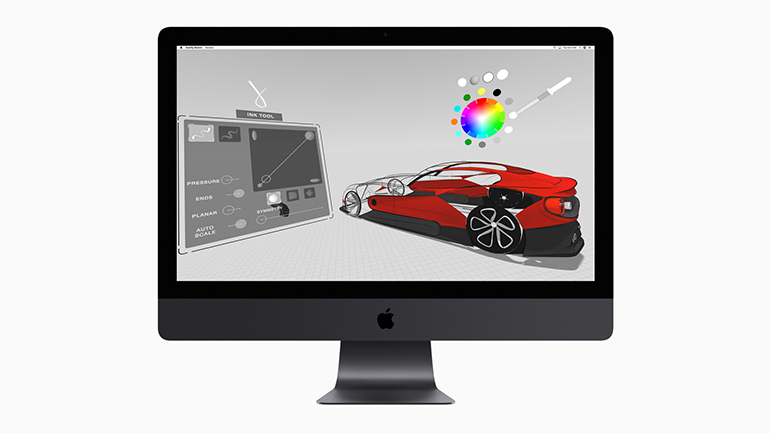'ZDNET Recommends': What exactly does it mean?
ZDNET's recommendations are based on many hours of testing, research, and comparison shopping. We gather data from the best available sources, including vendor and retailer listings as well as other relevant and independent reviews sites. And we pore over customer reviews to find out what matters to real people who already own and use the products and services we’re assessing.
When you click through from our site to a retailer and buy a product or service, we may earn affiliate commissions. This helps support our work, but does not affect what we cover or how, and it does not affect the price you pay. Neither ZDNET nor the author are compensated for these independent reviews. Indeed, we follow strict guidelines that ensure our editorial content is never influenced by advertisers.
ZDNET's editorial team writes on behalf of you, our reader. Our goal is to deliver the most accurate information and the most knowledgeable advice possible in order to help you make smarter buying decisions on tech gear and a wide array of products and services. Our editors thoroughly review and fact-check every article to ensure that our content meets the highest standards. If we have made an error or published misleading information, we will correct or clarify the article. If you see inaccuracies in our content, please report the mistake via this form.
Apple iMac Pro (late 2017) review: An AIO for the Pro crowd


Apple iMac Pro (late 2017)
pros and cons
- Workstation performance in slimline AIO design
- High-quality 5K display
- Up to 18-core Xeon W CPU
- macOS now supports HTC's Vive headset
- Very expensive
- Poor upgradeability/repair options
- Integrated display, inflexible non-modular design
- Editors' review
- Specs
Apple unveiled the new iMac Pro at its World Wide Developer Conference last June, and the high-end AIO desktop subsequently shipped in small volumes -- more or less on schedule -- towards the end of December last year. But, aware of the unease among its professional customers following the mixed reception for the most recent MacBook Pro updates, and the admission that it is "completely rethinking the Mac Pro" range, Apple has kept this new workstation-level iMac closely under wraps and has only allowed limited access to the press.
But, in early February, just as the most powerful 18-core configuration began to reach customers, Apple provided more detailed briefings to ZDNet and other publications. The burning question is whether this latest incarnation of the veteran iMac can win over demanding professional users -- or at least hold the fort until Apple's plans for a revamped Mac Pro bear fruit.
The iMac Pro is aimed at users in creative industries who demand serious computing power. Powered by 8-, 10-, 14- or 18-core Xeon W processors with Radeon Pro Vega graphics, prices range from £4,899 ($4,999) to £12,279 ($13,199).
Fade to (space) grey
Superficially, the iMac Pro is virtually identical to the standard 27-inch models that have been available for several years, with the same physical dimensions and 5K Retina display, and only the new 'space grey' colour scheme to set it apart from its predecessors.
Internally, though, the iMac Pro is a completely different beast. Apple claims that removing the conventional hard drive used in previous models has saved a lot of space inside the unit, which is now devoted to an enhanced cooling system for the high-end CPU and GPU configurations that are available.
Rather than the three configurations Apple normally offers, the iMac Pro starts with one 'standard' configuration that costs £4,082.50 (ex. VAT; £4,899 inc. VAT, or $4,999). For this, you get an 8-core Xeon W processor running at 3.2GHz (up to 4.2GHz with TurboBoost), along with 32GB of ECC RAM, a 1TB solid-state drive, and a Radeon Pro Vega 56 GPU with 8GB of HBM2 (High-Bandwidth Memory) video RAM.
That standard configuration can then be modified with 10-core, 14-core and 18-core versions of the Xeon W, with up to 128GB of memory, 4TB of SSD storage, and a Vega 64 GPU with 16GB of HBM2 video RAM. Ticking all the boxes on those upgrades brings the price of a top-of-the-range iMac Pro to a startling £10,232.50 (ex. VAT; £12,279 inc. VAT, or $13,199).
'A good computer'
Apple claims that even the standard configuration of the iMac Pro is considerably more powerful than any of the existing quad-core iMac models, offering 3.4x performance for 3D graphics and visualization, 5x improvement for scientific modelling and simulations, as well as the ability to edit eight streams of 4K video at full resolution and in real time.
Top ZDNET Reviews
Our own tests confirm that the iMac Pro significantly outperforms previous versions of the iMac. Single-core performance for the 3.2GHz Xeon W is nothing special, with Geekbench 4.2 recording a score of 5134 that's only slightly faster than last year's standard 27-inch 3.4GHz Core i5 iMac. But while the quad-core iMac achieves a multi-core score of 14,000, the 8-core iMac Pro races ahead with 31,400. The solid-state drive performs strongly too, with write and read speeds of 3,020MB/s and 2,487MB/s respectively.
Our Cinebench R15 video test results are more mixed, with 120fps for the iMac Pro compared to 99.5fps for the standard iMac. That might not seem to justify the far higher price of the iMac Pro -- and for some tasks, the dual-GPU configuration of the existing Mac Pro might still have advantages. However, Cinebench doesn't fully reflect the multi-tasking capabilities of the 8-core Xeon W, which excels at tasks such as simultaneously handling multiple streams of 4K video, or performing 360-degree video editing for VR content in Apple's recently updated Final Cut Pro X. And, at long last, Apple has quite pointedly been offering journalists the chance to wear the HTC Vive headset during demo sessions with the iMac Pro, as a way of letting everyone know that it has indeed released 'a good computer' that can actually handle VR.
Ports at the back of the iMac Pro are: 3.5mm headphone; SDXC card; 4x USB 3.0; 4x Thunderbolt 3/USB-C; 10 Gigabit Ethernet (RJ-45). There's no external access to the RAM slots for memory upgrades.
The iMac Pro will certainly be tempting for existing iMac users who have been waiting for a high-end pro upgrade (other than the effectively obsolete Mac Pro). But it's not all good news. Like the MacBook Pro, the iMac Pro lacks even the option for simple memory upgrades, as the back-panel slot that provided access to the memory slots on other iMac models has now been eliminated, so it's advisable to budget for as much memory as you can afford at the time of purchase.
However, the iMac Pro doesn't actually have its memory soldered onto the motherboard, so an adventurous IT manager who is prepared to separate the front and back panels could perform their own upgrades and repairs if necessary. And, as the brave team at iFixit have reported in their latest teardown, it seems that even the Xeon W processor could potentially be replaced as well.
That's not the case with the Vega 56 GPU, though, which is firmly soldered into place. On the plus side, Apple has announced that it's planning an update for the current macOS High Sierra that will support the use of external GPUs for the first time. That will provide an important upgrade path that the iMac has previously lacked, helping to ensure that this expensive piece of kit continues to earn its keep for years to come.
Conclusions
Its all-in-one design and lack of internal expansion won't suit all professional users, but the iMac Pro does go a long way to restoring the credibility of Apple's professional desktop line-up.
The impressive 5K display and significantly improved performance mean that the iMac Pro is well suited to specific tasks such as high-end video-editing, 3D design and visualisation -- and even VR content creation at long last. However, Apple still has its work cut out to deliver the more 'modular' replacement for the existing Mac Pro that it has promised for later this year.
RELATED AND PREVIOUS CONTENT
The new iMac Pro is actually cheaper than the original Mac
The iMac Pro is Apple's most powerful, and most expensive computer. Even so, you may be surprised to learn that it is comparatively less expensive than the first Mac. And the difference in performance? Just wow.
iMac Pro: Price of this fully-equipped, most powerful Mac ever? $13,199 - such a deal
In June, we estimated that a fully-equipped iMac Pro would cost north of $17,000. Now that Apple has finally started taking orders, the top-of-the-line price is only (only!) a bit more than $13K. (Psst! Base price is a mere $4,999.)
Apple iMac 27-inch with Retina 5K display (2017): CPU and GPU upgrades deliver better value for money
Some iMac owners may be tempted to wait for the forthcoming iMac Pro, but this 2017 update proves that the veteran iMac is still alive and kicking.
Build yourself a Windows-powered iMac Pro clone
Like the look of Apple's new iMac Pro workstation, but you're a Windows user so macOS is a no-go zone for you? No worries! You can get all the power and performance of the iMac Pro while still being able to run Windows.
iMac Pro: A cheat sheet for professionals (TechRepublic)
The iMac Pro's impressive specs might redeem Apple with professionals. Here's what business users need to know about the all-in-one machine.
Read more AIO reviews
- https://www.zdnet.com/product/aermoo-m1-phone/Dell Precision Workstation AIO 5720 review: A professional-level all-in-one with excellent GPU performance
- HP EliteOne 1000: A 34-inch curved all-in-one monster
- https://www.zdnet.com/pictures/gallery-top-10-accessories-for-apples-homepod/Lenovo ThinkCentre M910z AIO review: Unassuming design, strong performance for the price
- https://www.zdnet.com/product/cat-s41-4g-lte-32-gb-gsm-smartphone/Microsoft Surface Studio review: An appealing all-in-one for creatives, but the price is high